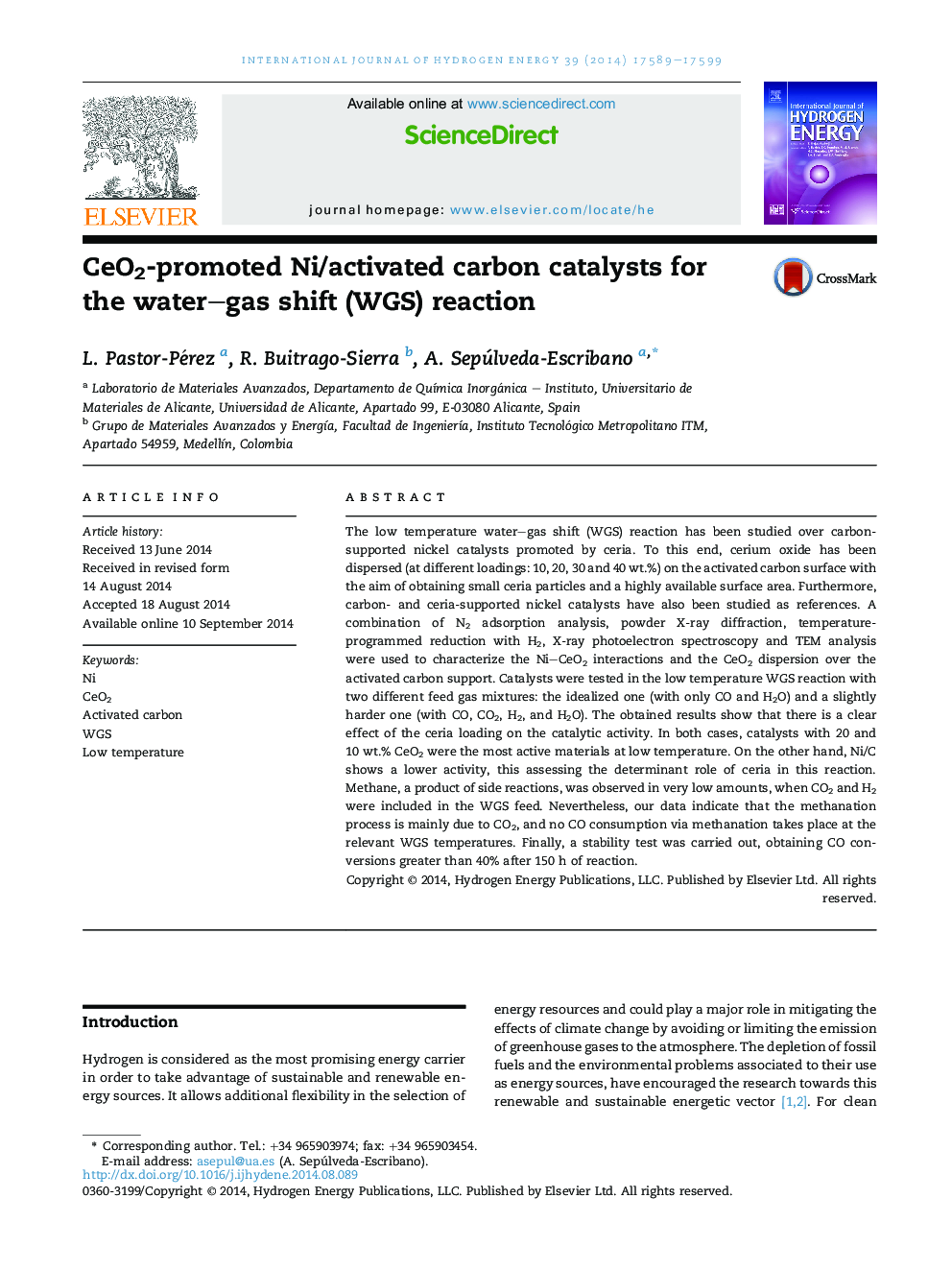| Article ID | Journal | Published Year | Pages | File Type |
|---|---|---|---|---|
| 1271855 | International Journal of Hydrogen Energy | 2014 | 11 Pages |
•Highly efficient catalysts for the low temperature water gas shift (WGS) have been developed.•Ni–CeO2/C catalysts as an alternative to noble metal based catalysts for pure H2 production.•Optimized use of CeO2 by dispersing it over the activated carbon surface.•Impact of the ceria loading in the performance of the Ni–CeO2/C systems.
The low temperature water–gas shift (WGS) reaction has been studied over carbon-supported nickel catalysts promoted by ceria. To this end, cerium oxide has been dispersed (at different loadings: 10, 20, 30 and 40 wt.%) on the activated carbon surface with the aim of obtaining small ceria particles and a highly available surface area. Furthermore, carbon- and ceria-supported nickel catalysts have also been studied as references. A combination of N2 adsorption analysis, powder X-ray diffraction, temperature-programmed reduction with H2, X-ray photoelectron spectroscopy and TEM analysis were used to characterize the Ni–CeO2 interactions and the CeO2 dispersion over the activated carbon support. Catalysts were tested in the low temperature WGS reaction with two different feed gas mixtures: the idealized one (with only CO and H2O) and a slightly harder one (with CO, CO2, H2, and H2O). The obtained results show that there is a clear effect of the ceria loading on the catalytic activity. In both cases, catalysts with 20 and 10 wt.% CeO2 were the most active materials at low temperature. On the other hand, Ni/C shows a lower activity, this assessing the determinant role of ceria in this reaction. Methane, a product of side reactions, was observed in very low amounts, when CO2 and H2 were included in the WGS feed. Nevertheless, our data indicate that the methanation process is mainly due to CO2, and no CO consumption via methanation takes place at the relevant WGS temperatures. Finally, a stability test was carried out, obtaining CO conversions greater than 40% after 150 h of reaction.
Graphical abstractFigure optionsDownload full-size imageDownload as PowerPoint slide
